OnePlus 9 Pro Review: Warp Speed


The OnePlus 9 Pro is the Chinese brand’s latest attempt to build the best phone possible.
And we’re not talking here about a budget experience. No, OnePlus is delivering a fully fledged handset to take on the Samsung Galaxy S21 Plus and Oppo Find X3 Pro.
Past experience has taught us that there’s usually a hefty caveat with any OnePlus flagship. For example, the OnePlus 7 Pro lacked an IP rating, while the 8 Pro couldn’t quite compete with the best camera phones. With the OnePlus 9 Pro, do we finally have a no-compromise device?
OnePlus 9 Pro pricing and release date
The OnePlus 9 Pro is being launched fairly widely. It’s available from OnePlus direct in a number of countries, including the United States, Canada and the UK.
However, in the UK availability is scarce if you’re looking to pick up this device on a long-term contract. It seems only Three will be stocking it, which is a shame for such a pricey device.
Speaking of pricing, only UK and Euro pricing is currently available, but I’ll update this page once we get more info. The Morning Mist and Stellar Black models come with 8GB of RAM and 128GB of storage at a price of £829/€899, while the Pine Green option with 12GB of RAM and 256GB of storage will sell for £929/€999. If you want the 50W wireless charger then that will cost an extra £69.95, while the OnePlus Watch is £149.
OnePlus 9 Pro design and screen – Flagship view
- Adaptive 120Hz can drop as low as 1Hz to save juice
- Excellent OLED panel with plenty of detail
- Multiple colours and finishes available
Design-wise, the OnePlus 9 Pro isn’t the most exciting phone. It’s perfectly adequate, with its curved front and back, glossy rim and expansive screen covering the front – but it lacks the stand-out style of the Samsung Galaxy S21 or iPhone 12.
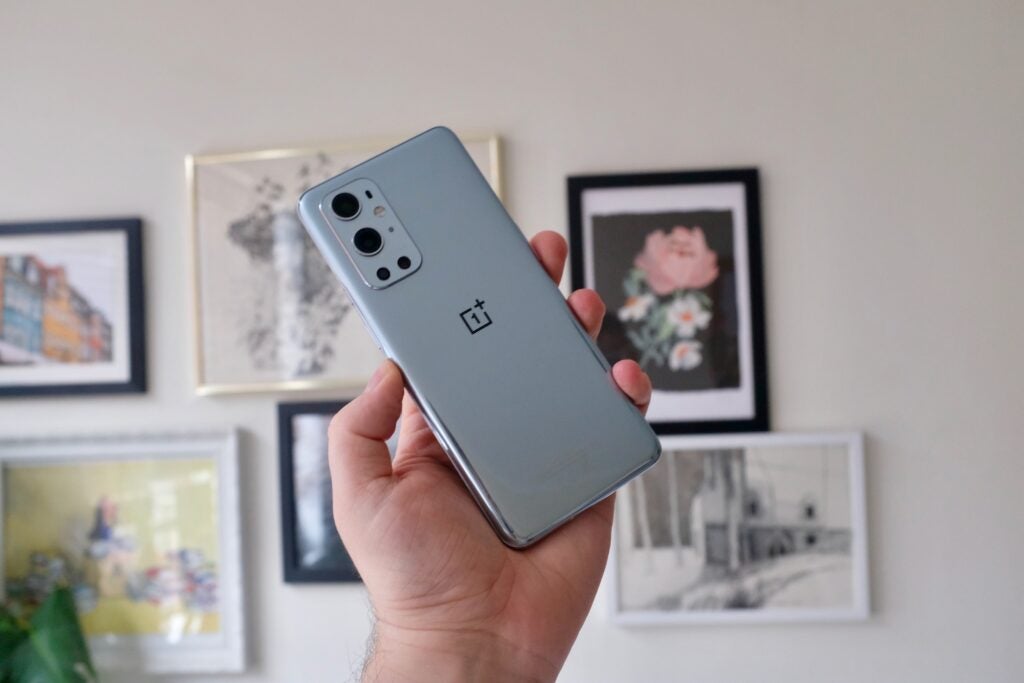
My review unit is the headline Morning Mist version. This handset, at least on the rear, combines heavily glossy and frosted silver finishes that looks good out of the box, but quickly becomes covered in smudges following a few minutes of use.
If I were buying the phone, my eye would be caught by the Pine Green model, with its moody colour and matte finish. There’s a Stellar Black model too, which has the brand’s once-ubiquitous rough Sandstone finish.
The metal and Gorilla Glass sandwich retains all the bits I’d expect from a flagship device, especially one from OnePlus. The handy alert slider remains, providing quick and tactile access to sound profiles. This is a super-convenient feature, and I can’t understand the reasons that other manufacturers haven’t added it to their devices. The 9 Pro is IP68-rated to survive 1.5m submersion in water for 30 minutes, and the glass rear allows for wireless charging, too.
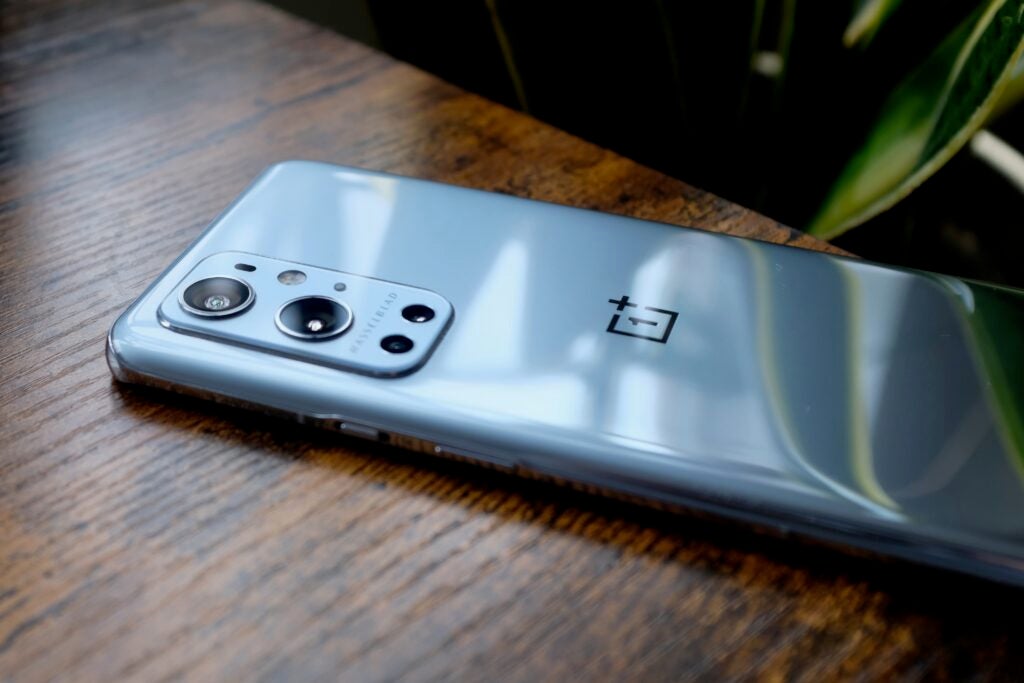
The only rear design flourish is the camera housing, which prominently displays the Hasselblad branding – which you’ll hear far more about in the camera section further down. The unit comprises two large sensors, with two smaller ones below and a flash.
Flip over the phone and you’ll instantly forget the run-of-the-mill looks. The display here is gorgeous. It’s a 6.7-inch OLED panel, with LTPO (low-temperature polycrystalline oxide) tech for adjusting the refresh rate to best match the task you’re doing. Looking at an article? It can drop to 1Hz. Watching a film on Netflix? It will bump that up to 24Hz. Playing Fortnite? The screen will push on to its maximum 120Hz.
If you’re moving to a high refresh screen for the first time then you’ll find the change monumental. Plus, this Smart Refresh tech ensures you’re not wasting energy by running it at 120Hz all the time.
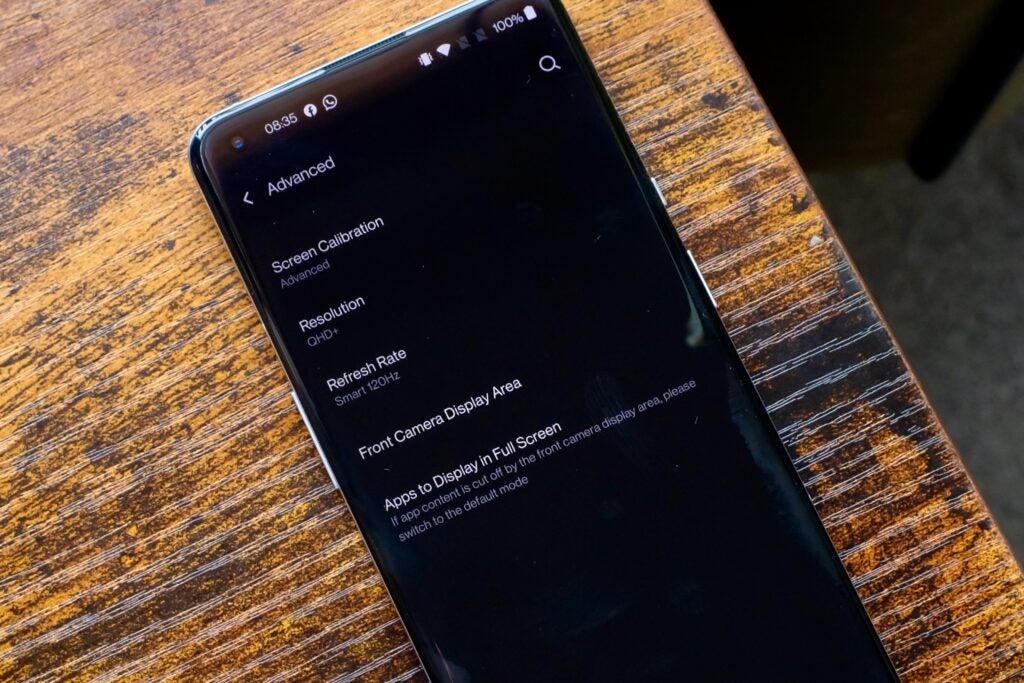
It’s a bright panel (OnePlus claims 1300 nits at its peak), with enough kick to counteract direct use in sunlight or give enough definition to HDR content on Netflix or YouTube. By default, it comes set at 1080p – which you can happily remain with to eke-out more endurance. If you want things sharper then you can push it to 1440p, which is what I’d opt to do.
It’s possible to tweak the colours on the display to your preference, too, either warming them up or cooling things down. I tend to use the DCI-P3 mode, to give everything a warmer, more pleasing look.
The customisations don’t stop there. You have the usual SDR to HDR booster modes – which, in my opinion, tend to oversaturate – and a mode that will sharpen video in supported apps. If you’re a gamer, the Hyper Touch setting ramps up the syncing speed between the display and the processor to 360Hz for more responsive controls in supported titles such as Call of Duty Mobile. If you play such games then you’ll notice the difference.
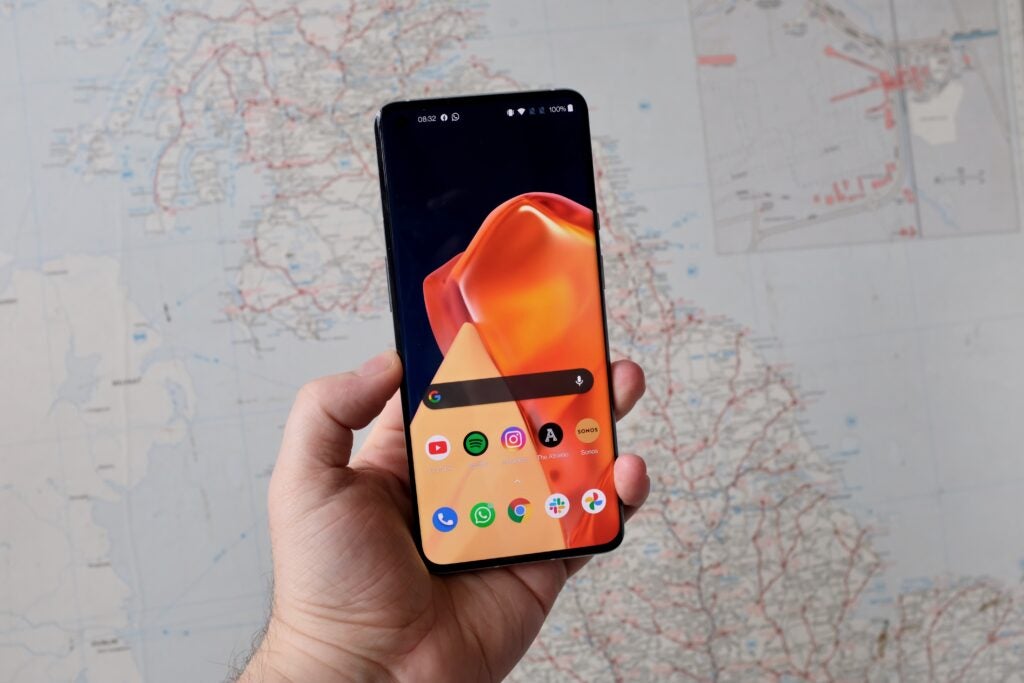
There are a couple of issues I’ve encountered with the panel, although they are minor. For example, the auto-brightness setting is rubbish, taking far too long to alter. In addition, it often dropped me right down to the lowest brightness setting for no reason, forcing me to manually up it again. I’ve also found the screen picks up many more fingerprints than other Android phones I’ve reviewed, and the curved edges do still heavily reflect light.
Nevertheless, the OnePlus 9 Pro’s screen is certainly up there with the best displays around, and OnePlus has made the panel’s curvature a lot less obvious than on the OnePlus 8 Pro. As a result, the handset is far easier to hold and use. It’s still big, but at less than 200g it’s noticeably lighter than the iPhone 12 Pro Max and Galaxy S21 Ultra I was comparing it to. It would have been nice to see OnePlus offer a smaller version of this phone that doesn’t sacrifice quite as much as the OnePlus 9.
OnePlus Pro 9 Pro camera – Does the Hasselblad partnership pay off?
- OnePlus teams up with the Swedish camera brand for colour science
- Excellent ultra-wide shots
- Some issues with camera speed hamper the experience
OnePlus has teamed up with Hasselblad to deliver the OnePlus 9 Pro’s cameras, plastering the Swedish brand’s name across the module on the rear of the device and in the camera app itself.

Before I get into the camera skills, it’s worth looking at this partnership because, at this stage, the input from Hasselblad is quite minimal – at least that’s what it feels like. While it will likely expand in the future, the current benefits are limited to some Hasselblad influence in the camera app (shutter sound, an orange button, expanded Pro mode) along with colour tuning.
The camera hardware itself isn’t Hasselblad-infused. Instead, you have two main cameras: one wide and one ultra-wide. The wide is a 48-megapixel Sony IMX789 with optical image stabilisation (OIS), an f/1.8 aperture and an equivalent focal length of 23mm.
The ultra-wide is also a Sony sensor, this time a 50-megapixel unit with an f/2.2 aperture and freeform lens to avoid distorted images.
This is a good camera; it’s no longer the weakest part of a OnePlus phone. Whether this is down to Hasselblad or the newer Sony sensors is a mystery, but I’ve taken numerous shots that compete well with the best camera phones around.
OnePlus said the colour toning should be more natural with the Hasselblad tuning, although I can’t say I’ve really noticed this whether shooting in the standard or Pro mode. Images are a little less saturated than the Oppo Find X3 Pro, but they still display punchy colours that are more vibrant than the actual subject. See the images below for some sample shots taken with the OnePlus 9 Pro.



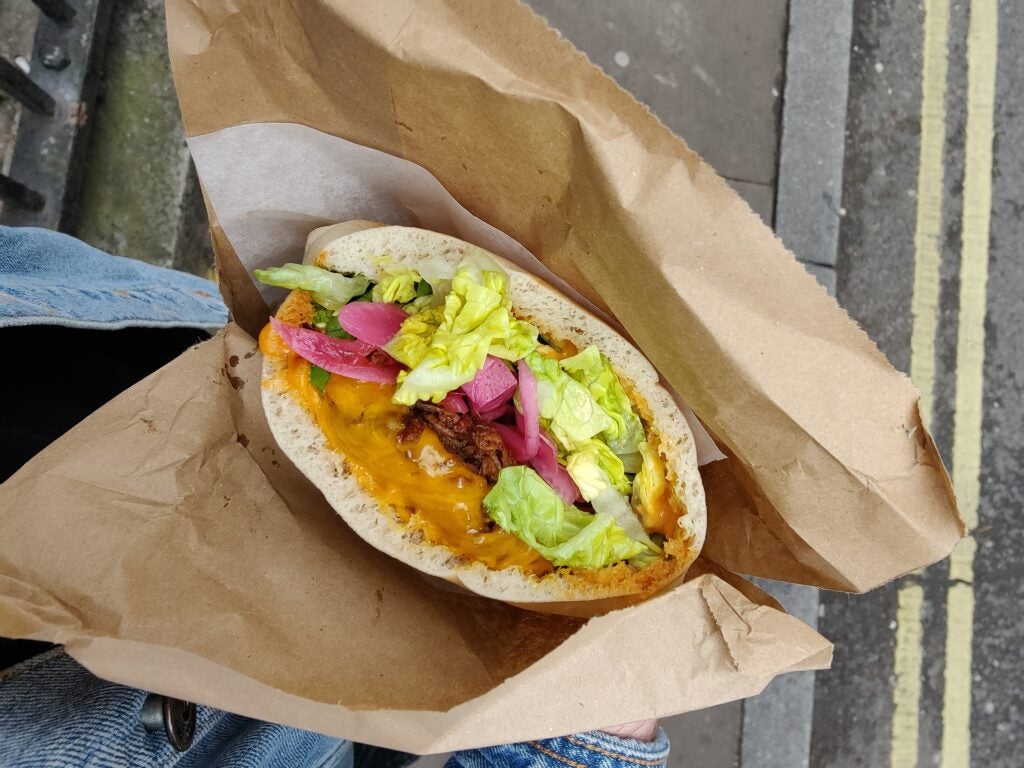
The ultra-wide camera is super- impressive, however, especially since it foregoes that fish-eye view you see with much of the competition. Ultra-wide shots are crisp and well calibrated with the main sensor, so the colour doesn’t shift huge amounts when you switch.
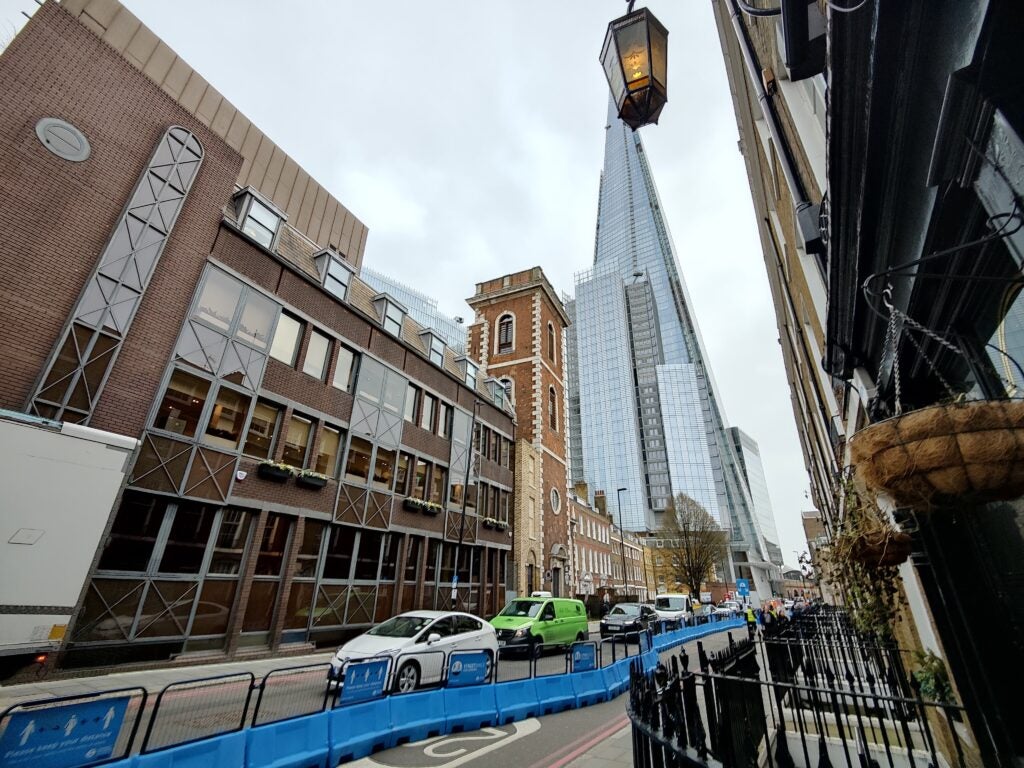
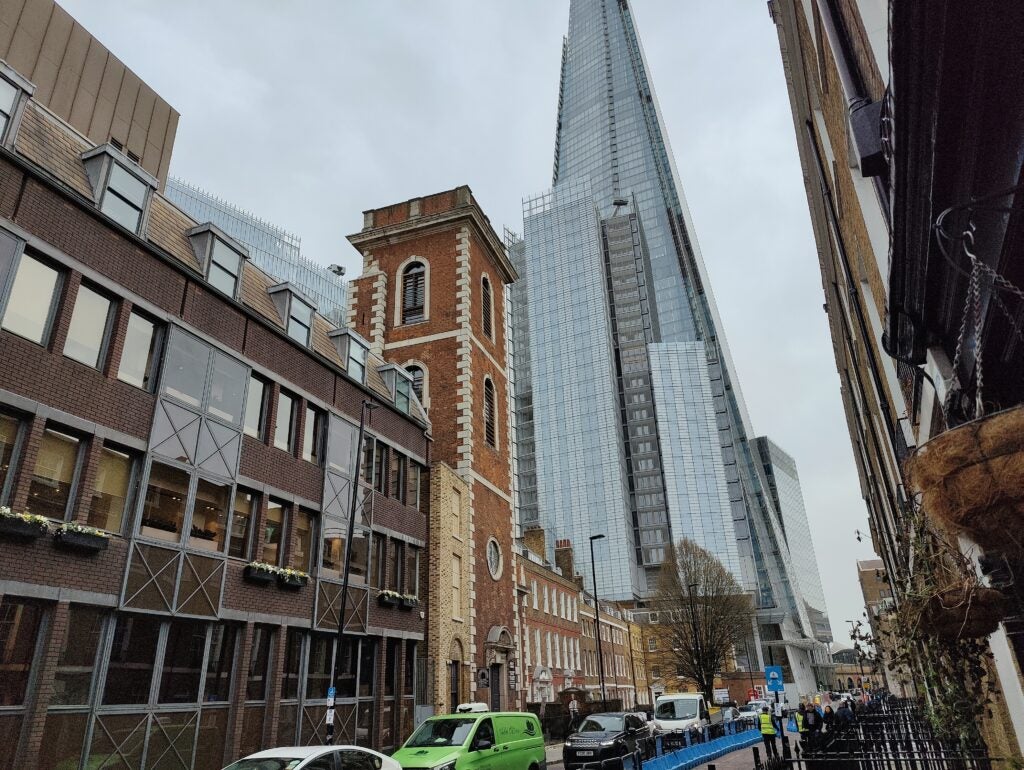
The Nightscape low-light shooting mode is present, too – and again, it’s very good for pulling out detail and boosting light in dark shots. The results don’t look very realistic, but that’s to be expected with all the HDR stitching and post-processing that goes on.
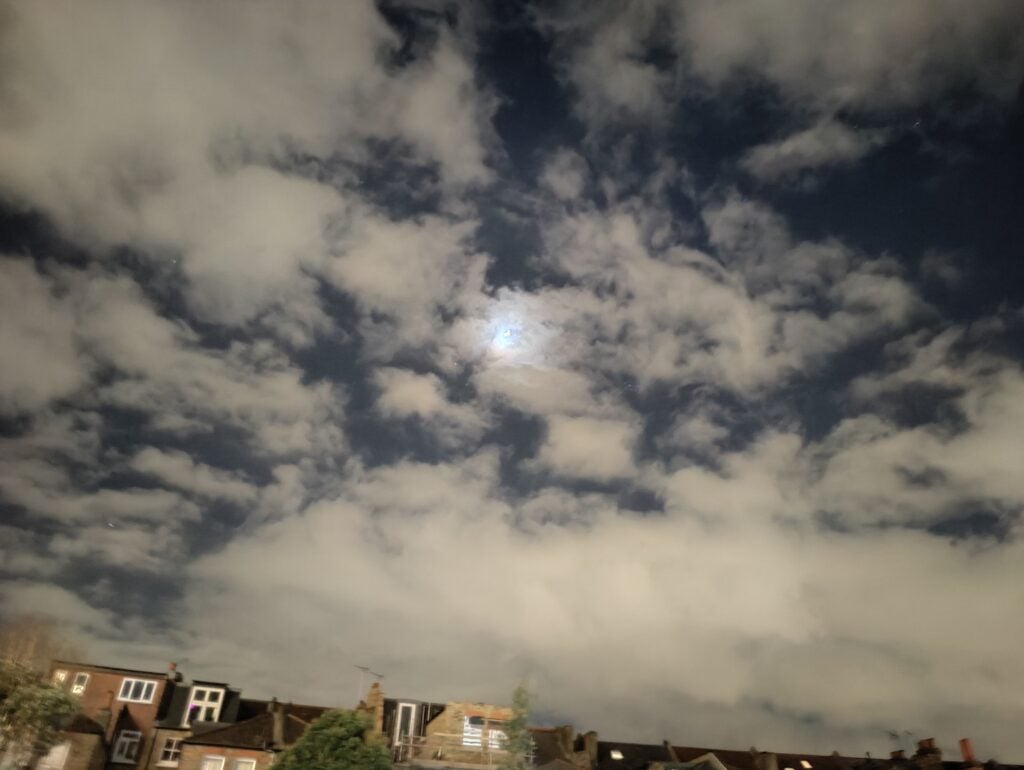
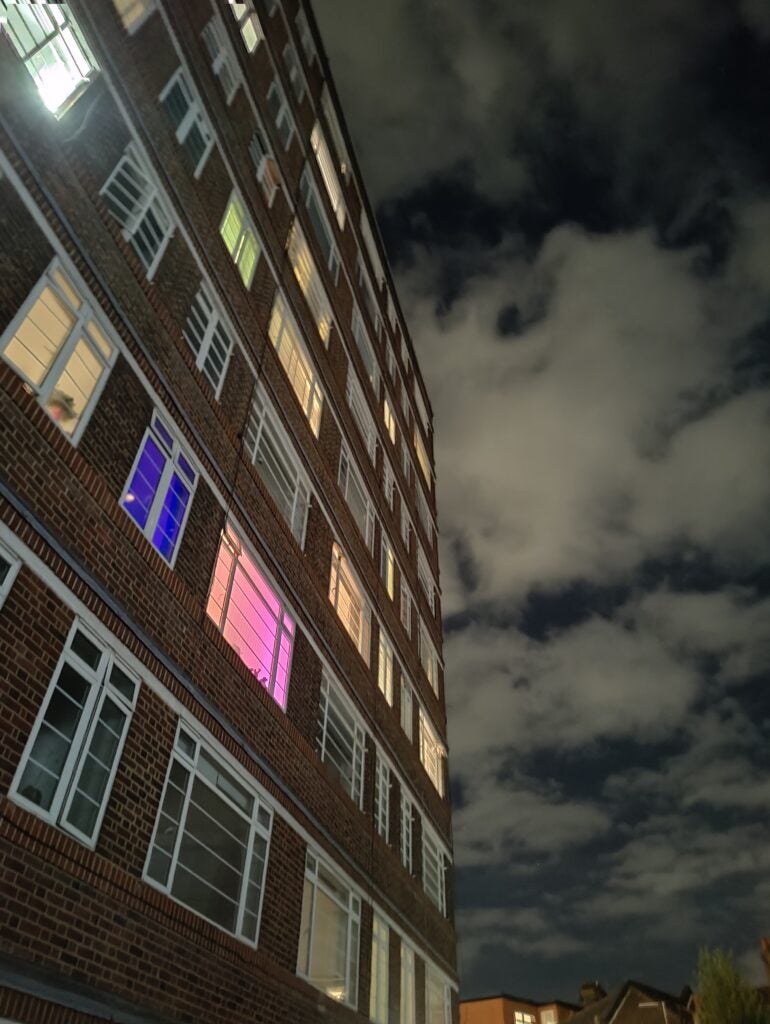
Shooting with these two main sensors for more than 10 days now, I don’t feel I’m missing out on a great camera. This is especially true for daylight shots, which, on the whole, look very good. Note that the camera app is slow, something I delve deeper into in the Performance section below.
If you have the desire to play around with the settings, then the Pro mode is stacked-full of customisations – and you can shoot in RAW 12-bit.
However, this still isn’t a complete camera system. The 8-megapixel telephoto camera is pretty poor. Detail is lost when you’re at 3.3x and the f/2.4 aperture means it struggles to grab light in darker situations. The fourth sensor is merely a 2-megapixel monochrome sensor that aids the main camera.
In terms of video, there’s 8K at 30fps, 4K at 30/60/120 and 1080 up to 240fps. Having 4K at 120 is very much welcome if you’re trying to capture some silky-looking b-roll – and although watching back 8K footage is tricky, it looks good on a spec sheet.
OnePlus 9 Pro performance – Snapdragon 888 runs the show
- Snapdragon 888 5G chip keeps things running smooth
- One of the best Android skins around
- Multiple RAM and storage options
If you’ve read any of our other reviews for the best Android phones of the year, then this section will read much like many of them. Like the Oppo Find X3 Pro and Xiaomi Mi 11, the OnePlus 9 Pro packs a Snapdragon 888 chipset with 5G support.
That’s paired with 8GB or 12GB of LPDDR5 RAM (the latter of which I am using here) and 128GB or 256GB UFS 3.1 of storage. Considering there’s no expandable storage, a 512GB option would have been welcome. Nevertheless, I do think that even the most ardent of users will be fine with 256GB.
The OnePlus 9 Pro feels fast and fluid and, aside from some software bugs that I’ll get on to later, it’s an absolute pleasure to use.
This probably doesn’t come as a surprise, though, since I feel that’s been my experience of OnePlus phones in general, even the cheaper OnePlus Nord.
The Hyper Touch gaming feature paired with the 120Hz display even makes the 9 Pro a great gaming device, with any title I tried running flat-out without issue – even with settings maxed out. Your only quibble might be that a flat display is better for gaming than the curved one here. For that, you might like the Asus ROG Phone 5.
My real-world use was reflected in the benchmark scores, too, with the OnePlus 9 Pro pumping out hefty synthetic scores in both Geekbench 5 and 3DMark. Suffice to say, there isn’t a phone out there in the Android space (aside from possibly the Ultimate version of the ROG Phone 5) that can beat the OnePlus 9 Pro in terms of speed.
Call quality and Wi-Fi (Wi-Fi 6 is supported, but not Wi-Fi 6E) reception are adequate, but the speakers are a little on the weak side. There’s no headphone jack, either.
OnePlus redesigned its OxygenOS software in 2020, moving away from the ‘stock’ look to give it more personality. It still takes most of its cues from Google, and all the big Android 11 features are here. But there’s a definite hint of Samsung’s OneUI here, too, which isn’t a bad thing at all. UI elements are lower on the display to make them easier to use with one hand, and navigation is improved.
There are lots of nice extras with OxygenOS, too, which make it one of my favourite versions of Android. There’s a Reading mode that turns everything black and white; a swip- down menu that can keep all your widgets together; and a heavily customisable always-on display. OnePlus has shown itself to be great with quick Android version updates, too.
OxygenOS isn’t without its issues, however. The camera app is slow, especially when you’re opening it up with a double-tap of the side key. Numerous times I’ve pulled the phone out and missed my shot as the app takes a good couple of seconds to load up.
OnePlus 9 Pro battery life – Warp speed ahead
- 65W charging remains a dream
- Super-fast wireless charging, if you buy the cradle
- Charger included in the box
The 4500mAh battery inside the OnePlus 9 Pro isn’t the biggest around, yet it does the job well. Choosing the ‘smaller’ cell allows for a slightly slimmer, lighter phone, and the trade-off here is just about worth it. I’ve managed to get through the day and into the next without hitting 0%, and the ridiculously fast charging will top the device back to 100% in about 35 minutes.
The Smart Refresh display does appear to make a difference. The display doesn’t drain heavily when streaming an episode of Altered Carbon, for example, losing only 6%. This isn’t quite as good as the Galaxy 21 Ultra, but superior to the Oppo Find X3 Pro.
You can, of course, hammer the battery. I noticed that gaming did cause issues – hardly a surprise considering the 120Hz refresh rate. Lowering the screen resolution helps a little; the device managed an extra 30-45 minutes with it set to 1080p.
When you’re running low, the tremendously fast Warp Charge achieves a 0-100% charge in around 30-35 minutes. The same charger can also juice up other devices such as a Nintendo Switch or a laptop up to 45W since it’s USB-C PD-enabled. You’ll need to use that particular charger, though; the speeds aren’t as fast with a third-party option.
This is one of the reasons I doubt OnePlus will ever ditch the boxed charger – it’s just too much of a feature on these phones to make someone buy it separately.
OnePlus is also selling a 50W wireless charger that I’ve been trialling with the phone. This offers a full charge in roughly 45 minutes, if you’re happy to put up with the level of noise it emits.
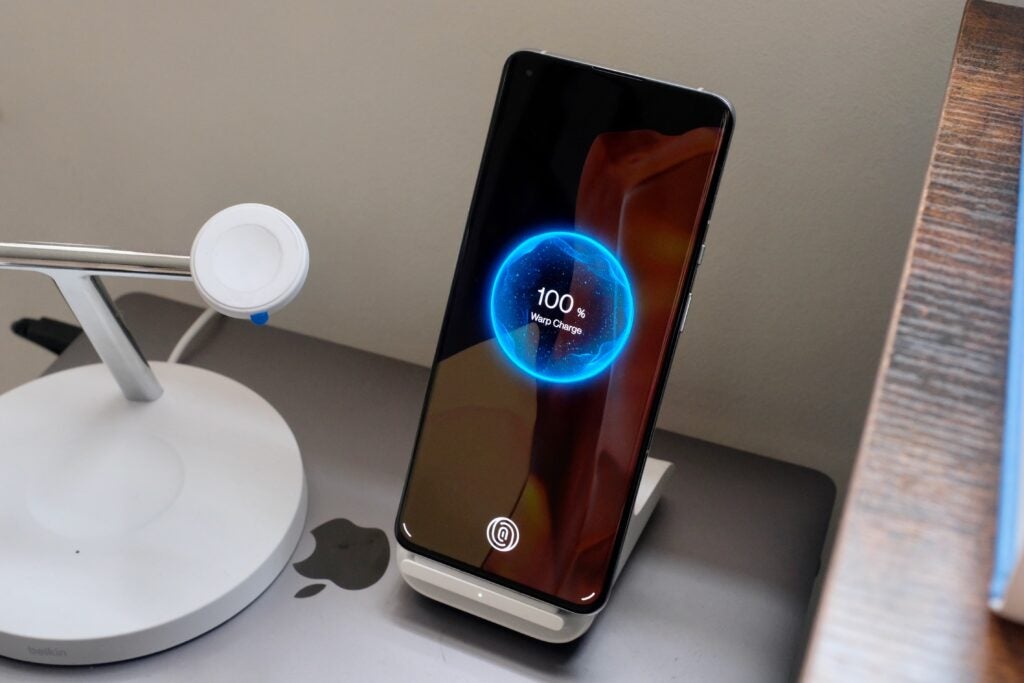
Of course, there are still questions to be asked about the health of batteries that are charged this quickly and what it really does to them in the long-term.
OnePlus 9 Pro conclusion
The OnePlus 9 Pro really is a great phone; it’s comfortably one of the best Android phones around. The screen is impressive, performance is snappy and the camera is surprisingly capable – even if a slow camera app can make the experience a little frustrating at times.
There aren’t any obvious missing features, possibly aside from a really good zoom camera – and while the design isn’t standout, it’s hardly ugly. My most significant concern is availability, and whether without a strong carrier and network partnerships people will be willing to part with the cash required to buy this device outright.
You should buy the OnePlus 9 Pro if….
- You want a great screen
The 120Hz OLED display is big (6.7 inches), bright and sharp. It’s fantastic for HDR content from Netflix and seriously fast and smooth for games.
- You hate long charge times
A full charge with the included brick takes around about 30 minutes. If you buy the OnePlus wireless charger, you can get a full charge in about 45 minutes. Impressive stuff.
- You’ve not upgraded in a while
I really do think this is an excellent choice if you’ve held off upgrading for a while. You’ll notice the speed improvements in both general performance and the display; it’s just a good all-round choice.
You shouldn’t buy the OnePlus 9 Pro if…
- You want a great zoom camera
I wasn’t expecting OnePlus to include a periscope zoom here, especially at the sub £1000 price, but even the ‘telephoto’ camera is pretty poor.
- You don’t want a big phone
The OnePlus 9 Pro isn’t the biggest device around, yet it’s still quite hefty. This isn’t a device for those who really don’t want a large phone.
- You’re not looking to spend big
I get it – the OnePlus 9 Pro isn’t as pricey as the Galaxy S21 Ultra or iPhone 12 Pro Max, even though it comes close if you throw the 50W wireless charger into the mix. However, the lack of network availability in the UK means if you don’t want it on Three, you’ll have to pay outright. That was fine when OnePlus sold £600 phones, but it’s harder to stomach with an £829 starting price.
The post OnePlus 9 Pro Review: Warp Speed appeared first on Trusted Reviews.
Source Trusted Reviews ,Home Appliances Reviews

No comments